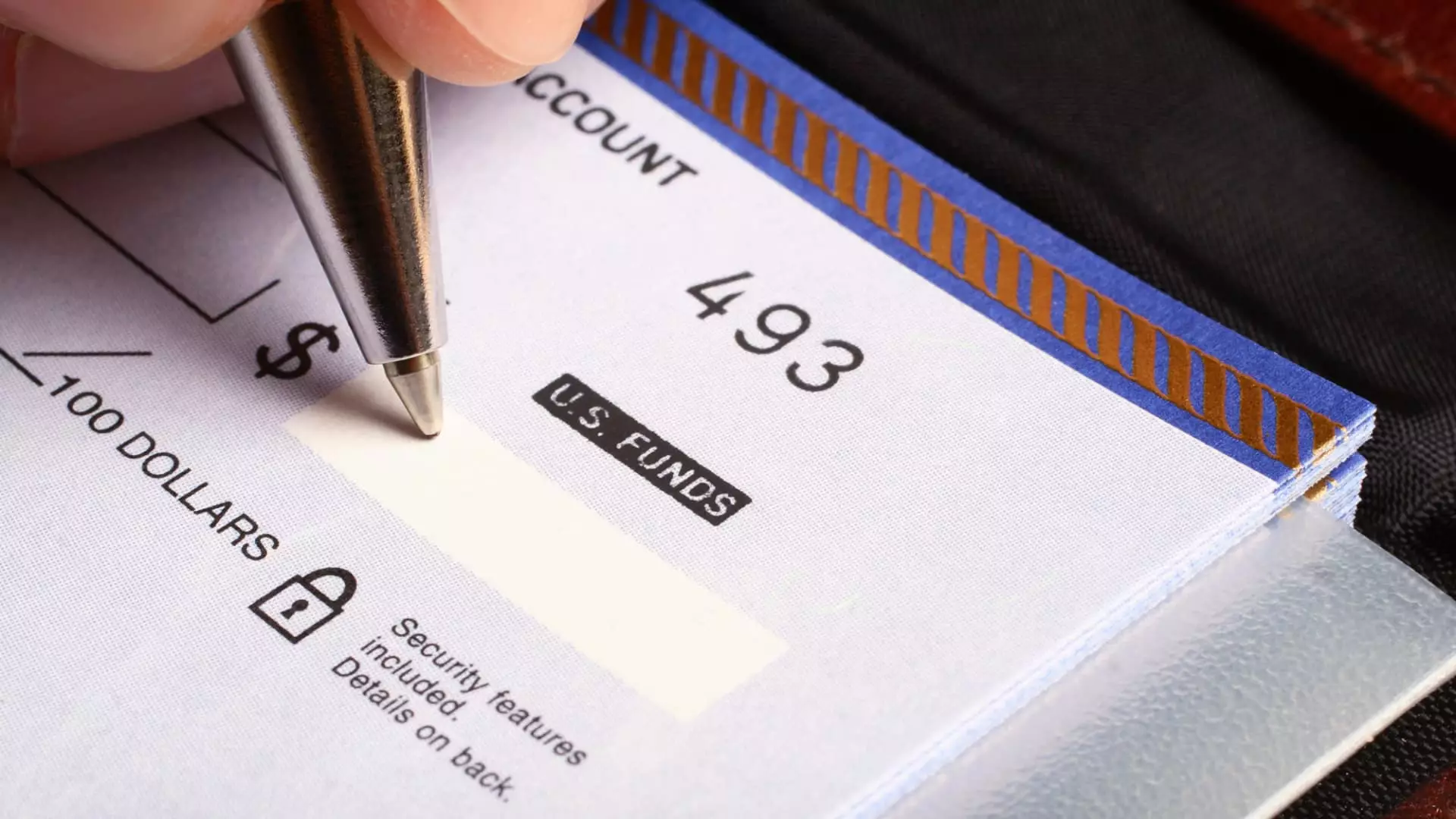The era of paper checks is swiftly dwindling, with the recent executive order from President Donald Trump marking a defining moment. By mandating all federal agencies to transition to electronic payment methods by September 30, the government is not only reflecting a crucial technological shift but is also addressing a prevalent issue—fraud. The overwhelming risks and inefficiencies tied to paper checks cannot be overstated. With millions affected, the stakes are high, and this drastic shift illuminates more than just financial logistics; it underscores an urgent need for modernization in governmental practices.
Gone are the days when paper checks were the norm for routine government disbursements, including much-needed Social Security payments. An estimated 456,000 Social Security checks mailed monthly exhibit a vulnerability to fraud, delays, and inefficiencies that now seem unacceptable in a fast-paced digital world. The change aims to eradicate these potential pitfalls, moving towards direct deposits, debit, credit card payments, and even integrating digital wallets. The government’s push toward electronic payments is an undeniable step toward streamlining services, reducing operational costs, and minimizing the vulnerabilities that emerge from outdated systems.
Socioeconomic Implications: Who Gets Left Behind?
While innovation should be celebrated, a potential oversight in this digital shift raises concerns regarding marginalized demographics. For many Americans, particularly seniors who are accustomed to the traditional way of handling payments, this evolution could exacerbate existing inequalities. With the demographic group over 55 being the primary daily check writers, we must question if the sudden priority placed on digital transactions adequately accommodates these constituents. The promise of modernization should not come with the collateral damage of alienating those who may lack easy access to technology.
The administration’s focus on phasing out paper checks raises critical questions. What will become of individuals who rely on checks as their primary payment method? The elderly and low-income populations often face uphill battles with technology adoption. The government must ensure that those without access to banking or electronic payment systems aren’t left in the lurch. Simply stating exceptions exist does little to provide real solutions for those left vulnerable on the fringes. Addressing this digital divide must be as pivotal as the transition itself.
The Catastrophic Cost of Fraud
The statistics surrounding check fraud are alarmingly significant. Reports estimate that fraud could cost the federal government between $233 billion and $521 billion annually. This staggering number cannot be ignored. The chaotic rise of fraud and identity scams amid an ongoing digital transformation is a “growing feast” for criminal organizations, as highlighted by industry experts. The era of paper checks is vulnerable, not just to theft but also to significant financial drain on government resources. The shift to electronic transactions isn’t merely about convenience; it’s a robust response to evolving threats posed by modern criminal enterprises.
As digital methods mature, so do the safety measures designed to protect them. Progress in authentication, monitoring, and encryption illustrates a promising future of secure financial transactions. Consumers must be equipped with the knowledge and resources to navigate this new landscape. The execution of this transition should prioritize educational initiatives that provide transparent guidelines on how to manage the switch effectively.
Legacy of Checks in the Modern Age
Despite the push against paper checks, their historical significance remains noteworthy. Emerging in the 11th century but mainstream only after the 20th-century banking reforms, checks have been an integral part of financial transactions for generations. Even with their usage declining dramatically over recent decades—plummeting by nearly 75% since 2000—checks still retain relevance, particularly for substantial transactions such as charitable donations or real estate dealings. They serve as a bridge connecting past practices with current technological advancements.
Ironically, while millennials and Gen Z have embraced cashless transactions—favoring peer-to-peer payment applications like Venmo and Apple Pay—older generations have not entirely abandoned the check. However, this blend of old and new underscores a transitional paradox; as some move toward a “check zero” future, others are hesitant to relinquish their ties to traditional banking. Digital payments, while undeniably convenient and efficient, should never dismiss the human element, and the importance of inclusivity cannot be overstressed.
The Road Ahead: Finding Balance
As we heed the call to modernize government payments, a balanced approach is paramount. Transitioning to electronic payments offers a myriad of benefits but must be coupled with a concerted effort to aid populations requiring additional support. The digital divide presents an ongoing challenge that cannot be overshadowed by the positives of modernization. Government agencies must prioritize inclusivity, ensuring everyone—regardless of age, income, or technological access—can participate in the digital economy.
The fate of paper checks may seem sealed, but the need for thoughtful implementation will define the success of this bold initiative. A responsible digital transformation enhances security and efficiency, but it should always remember the essential role of community and human connection embedded in every transaction.

